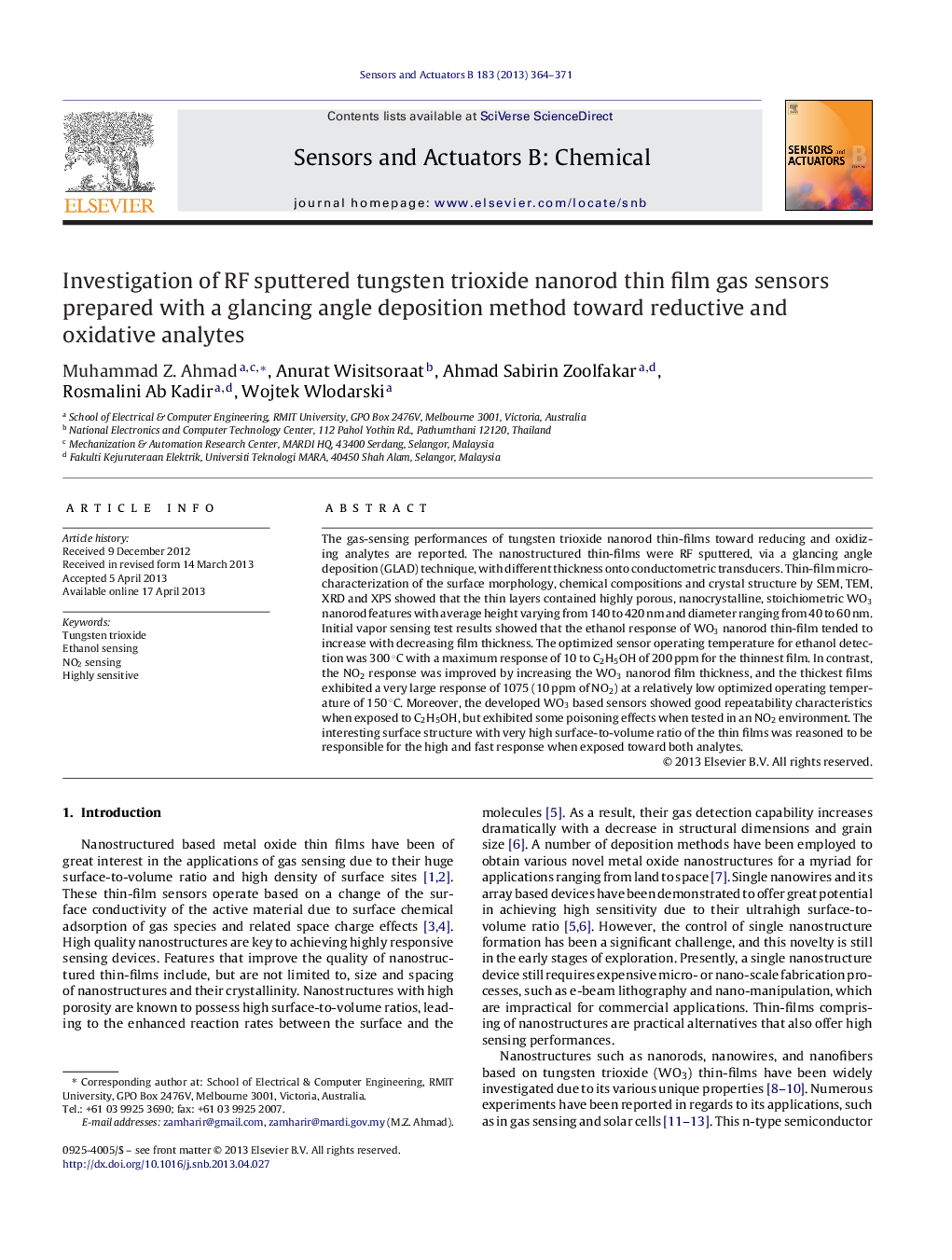| Article ID | Journal | Published Year | Pages | File Type |
|---|---|---|---|---|
| 743062 | Sensors and Actuators B: Chemical | 2013 | 8 Pages |
The gas-sensing performances of tungsten trioxide nanorod thin-films toward reducing and oxidizing analytes are reported. The nanostructured thin-films were RF sputtered, via a glancing angle deposition (GLAD) technique, with different thickness onto conductometric transducers. Thin-film micro-characterization of the surface morphology, chemical compositions and crystal structure by SEM, TEM, XRD and XPS showed that the thin layers contained highly porous, nanocrystalline, stoichiometric WO3 nanorod features with average height varying from 140 to 420 nm and diameter ranging from 40 to 60 nm. Initial vapor sensing test results showed that the ethanol response of WO3 nanorod thin-film tended to increase with decreasing film thickness. The optimized sensor operating temperature for ethanol detection was 300 °C with a maximum response of 10 to C2H5OH of 200 ppm for the thinnest film. In contrast, the NO2 response was improved by increasing the WO3 nanorod film thickness, and the thickest films exhibited a very large response of 1075 (10 ppm of NO2) at a relatively low optimized operating temperature of 150 °C. Moreover, the developed WO3 based sensors showed good repeatability characteristics when exposed to C2H5OH, but exhibited some poisoning effects when tested in an NO2 environment. The interesting surface structure with very high surface-to-volume ratio of the thin films was reasoned to be responsible for the high and fast response when exposed toward both analytes.
